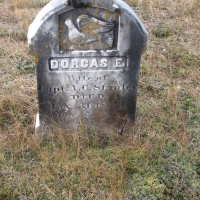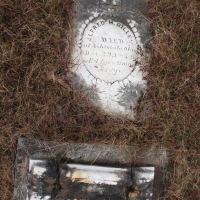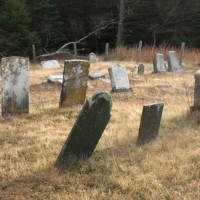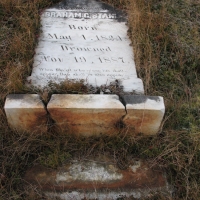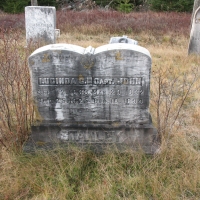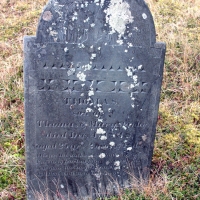These photographs of some of the headstones in the Stanley Cemetery were taken on December 5, 2013, to illustrate the types of problems that had developed over the course of 180 years in a salty, woodland environment. Many of the iron rods intended to secure the headstone to its stone base had rusted away, causing the headstone to fracture and/or lean, or even separate from its base. Many of the early stones (without rods) leaned due to weathering and erosion. Headstones develop an irreversible patina with age that evokes a very personal connection to history. They are subject to discoloration from weathering, algae, lichen, fungi, nearby plants, sun and rain, some of which can be gently removed.
After committee member Anne Grulich documented and photographed the placement, condition, and inscription of each grave during the summer of 2014, Fred Wieninger of Wieninger Monuments in Milbridge, ME, began repairing and preserving the cemetery stones. Fred, who has decades of experience and came highly recommended, outlined the work he would do as follows.
Straighten & Level Stones
During the course of this work, some stones will have to be temporarily disassembled and set aside to allow working room for other stones. Utmost care will be taken when handling them and returning them to their original positions.
Repair Damaged Stones
This would involve epoxying broken stones. Our goal would be to repair the stones in the best way possible. No repair of a broken stone would be perfect, but they would be markedly improved.
Raise Sunken Stones using 1″ minus compacting gravel.
Even Up Stone Rows when possible
Clean Each Stone
Fill in Sunken Graves and Low Areas Between Cemetery Lots
The exact starting date depended on weather and other factors like barge availability. Work began in September and concluded in October 2014.
WORK WAS COMPLETED IN OCTOBER 2014. (EXPLORE OUR BEFORE AND AFTER PHOTOS AND RESEARCH LINKS.)



